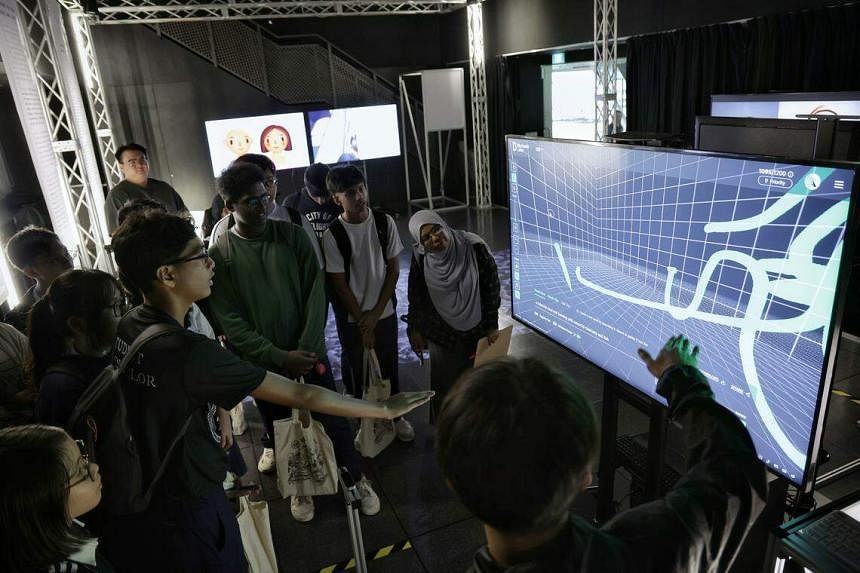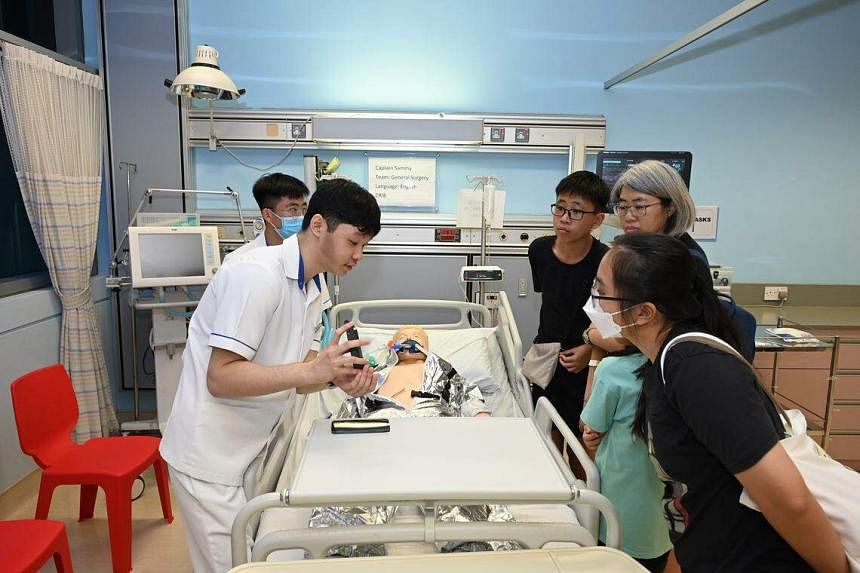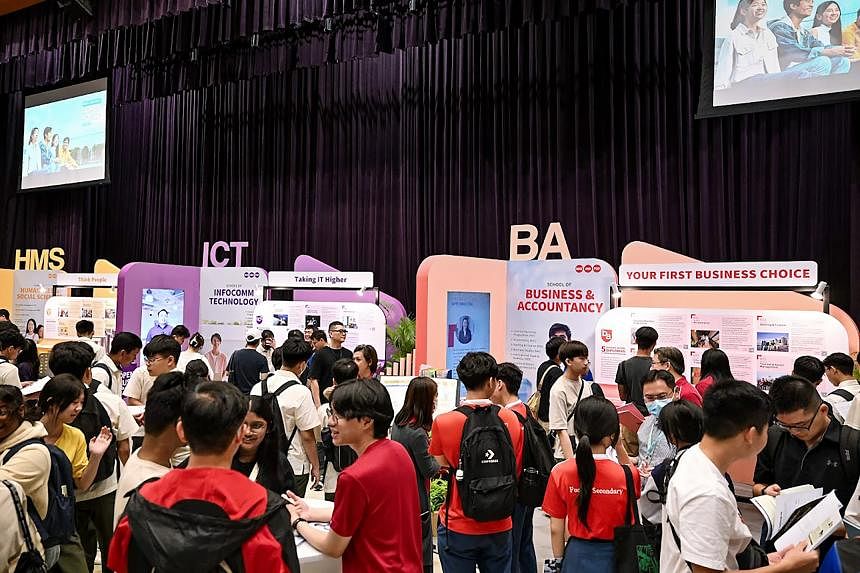SINGAPORE – The three-year polytechnic route continues to be popular with young Singaporeans who are opting for different admission pathways opened up by the Ministry of Education (MOE) in recent years.
Students applying to the polytechnics range from secondary school leavers to junior college (JC) and Institute of Technical Education (ITE) students.
MOE said that in 2023, around 21,100 students enrolled in full-time diploma courses across the five polytechnics – Nanyang Polytechnic, Ngee Ann Polytechnic, Republic Polytechnic, Singapore Polytechnic and Temasek Polytechnic.
But only about half – some 10,200 students – who enrolled in the polytechnics did so through the Joint Admissions Exercise (JAE), held in January every year for O-level students.
The JAE used to be the main route by which students were admitted into the polytechnics, before MOE started opening up other pathways to admit students, including the Early Admissions Exercise (Poly EAE).
First introduced in 2016, the scheme allows polytechnics to admit students based on their skills and talents apart from grades. It has become popular with O-level students as well as ITE upgraders, and has been expanded over the years to admit more diverse groups of students, including working adults.
MOE said the 10,200 figure for 2023 included 4,300 students who had received places through the Poly EAE.
Another scheme that has been expanded due to its popularity is the Polytechnic Foundation Programme (PFP), set up in 2013 to allow Secondary 4 Normal (Academic) students to apply directly to polytechnics for a foundation year instead of completing Secondary 5 and the O levels.
The scheme started with about 800 students in 2013, but currently has double the number of successful applicants every year.
In 2023, polytechnics received around 1,800 applications for the PFP, of which around 1,700 students were admitted under the scheme.
Currently, students need to pass all their PFP modules to progress to Polytechnic Year 1, and almost all PFP students have been able to do so.
Some 290 students who entered the polytechnics in 2023 came from the JCs and Millennia Institute. They either switched midway through their studies or after completing their A-level exams.
As in previous years, about 4,000 ITE graduates progressed to polytechnics in 2023.

Polytechnic officials and school leavers who used the various admission schemes say one reason why polytechnic education continues to be popular is because of the multiple and flexible pathways that MOE has provided over the years.
Ngee Ann Polytechnic principal Lim Kok Kiang cited one of its top nursing graduates in 2022, Ms Natalie Yeh, who switched to the polytechnic route after attending JC for a year.
Mr Lim said that in 2023, five out of six of the polytechnic’s top graduates had come through early admissions schemes, where an applicant’s interest and aptitude are also taken into account.
“Through the multiple and flexible pathways introduced into our education system in recent years, we are happy to see that more students are choosing polytechnics as a result,” he said.
Stressing that polytechnics are no longer preparing their students for a single career but for multiple careers, he said learning must mirror this ability to “flex, pivot and pick up skills continually”.
To this end, Ngee Ann Polytechnic has offered students more choices through its Personalised Learning Pathway programme, to allow students to pursue minors outside of their diploma to gain in-demand skills in areas such as cyber security and data analytics.
Mr Lim said many of the polytechnic’s students make it to the local universities, including the most competitive degree programmes such as medicine, law and business.
Students and parents interviewed said the higher number of polytechnic graduates making it to the local universities is another reason why the polytechnics remain popular. Currently, about one in three polytechnic graduates every year goes on to matriculate at universities here, up from around one in four in 2015.

Most of the new university places created over the last 10 years, including those at Singapore University of Social Sciences and the Singapore Institute of Technology, went to polytechnic diploma holders.
The two institutions cater more to polytechnic graduates, not only in their applied learning approach, but also in the degree programmes they offer.
Parent Jared Tan, 45, a business development manager, said he was initially unhappy his son wanted to study business in Singapore Polytechnic, instead of heading to a JC.
“I went to the open houses, saw the latest figures and all the offerings from polytechnics and came away with a changed mindset, and I am confident that if my son wants to go to university, he will be able to do so.”
Ms Yeh, 22, who is currently pursing a degree in nursing at the National University of Singapore (NUS), said she switched from JC to polytechnic after realising that she wanted to become a nurse. The JC route did not suit her.
“I was torn at first, after all I had spent one whole year in JC. But then I realised the system allowed me to switch over, and I have had no regrets. Because I took the poly route which suited me better, and went into nursing which was close to my heart, I did well and am now in the nursing degree course at NUS,” she said.
“It takes a while for young people at the age of 16 to figure out what they really want to do with their lives,” she added.
“I am glad that our education system now allows for these transfers and students’ aptitude and interests are taken into account.”
Polytechnic admissions in 2023
- 21,100 students enrolled in full-time diploma courses in the five polytechnics.
- Of the 21,100, 10,200 students landed a polytechnic place through the Joint Admissions Exercise.
- The 10,200 included the 4,300 who had received places through the Polytechnic Early Admissions Exercise, which allows students to apply for and receive conditional offers for admission to polytechnics based on aptitude, even before they receive their O-level results.
- Some 290 students who entered the polytechnics in 2023 came from the junior colleges and Millennia Institute. They switched midway through their studies or after completing their A-level exams.
- About 4,000 ITE graduates progressed to the polytechnics.
- Around 1,700 students were admitted under the Polytechnic Foundation Programme, which allows Secondary 4 Normal (Academic) students to apply directly to polytechnics for a foundation year, instead of going on to Secondary 5 and taking the O levels.


